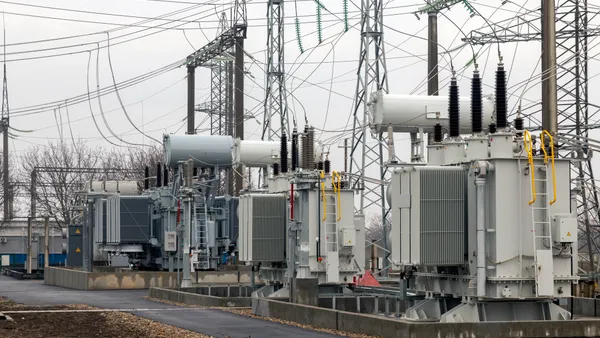Dive Brief:
- The U.S. Supreme Court's 5-4 unprecedented decision to stay implementation of the Clean Power Plan has thrown compliance plans around the country into upheaval, but perhaps most confused are states who had been planning strategies but opposed the law.
- ClimateWire reports several states are stuck in wait-and-see mode as they assess the stay's implications and determine whether or not to move forward with planning efforts.
- But some states, more aggressive in their carbon reduction work, say they will continue with their efforts regardless of the case's outcome. South Carolina has indicated it expects to continue work to decarbonize the state's power industry, an effort which began two years ago.
Dive Insight:
Before the Supreme Court delayed implementation of the Obama administration's signature climate plan, states roughly broke into three groups: In favor of the plan, and working in compliance; opposed to the plan, and working on compliance; or opposed and delaying work on reduction strategies.
Now some states are continuing carbon work while others, typically more stringently opposed to the plan, are indicating they will cease efforts.
Montana, which had some of the steepest carbon reduction goals, has indicated it will stop work. Gov. Steve Bullock (D) released a statement saying, "I have been clear that I think these rules were unfair to Montana. Given the court's ruling today, I am putting the work of the Clean Power Plan Council on hold."
Oklahoma, also a tough opponent of the plan, has indicated it will now turn its efforts to overturning the plan in court.
"Since the Supreme Court has stayed implementation, Oklahoma no longer faces a September compliance date and can focus on assisting the attorney general on overturning this rule," Oklahoma Secretary of Energy and Environment Michael Teague said in a statement.
Arizona Air Quality Division Director Eric Massey indicated the state was still mulling its options. The "decision is late-breaking and requires our careful and thoughtful analysis to ensure that Arizona pursues the most prudent path," he told ClimateWire.
The Clean Power Plan strives for a 32% reduction in carbon emissions from the power sector nationwide by 2030, but will be put on hold until the U.S. Court of Appeals for the D.C. Circuit reviews the plan and any subsequent Supreme Court appeals are over.
The plan, which was first proposed in 2014, was finalized in summer 2015. Efforts to block the regulatory package from taking effect have been in motion since then. Under the plan, states were supposed to submit their implementation plans by September 2016, with compliance slated to begin in 2022.
Even if the rule is ultimately upheld, the Supreme Court's stay on implementation of the rule could significantly impact compliance timelines for states and utilities. As of right now, the EPA will be unable to enforce its September deadline for states to submit compliance plans or request an extension. The EPA will continue to work with states on compliance plans while litigation goes forward, according to the White House.
A hearing at the D.C. Circuit is set for June 2, 2016.















